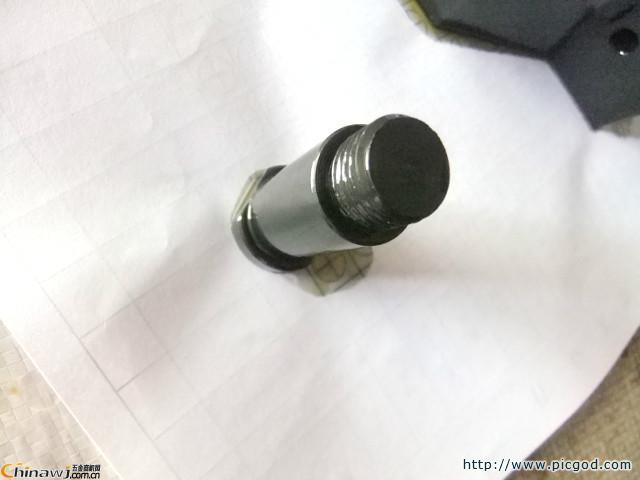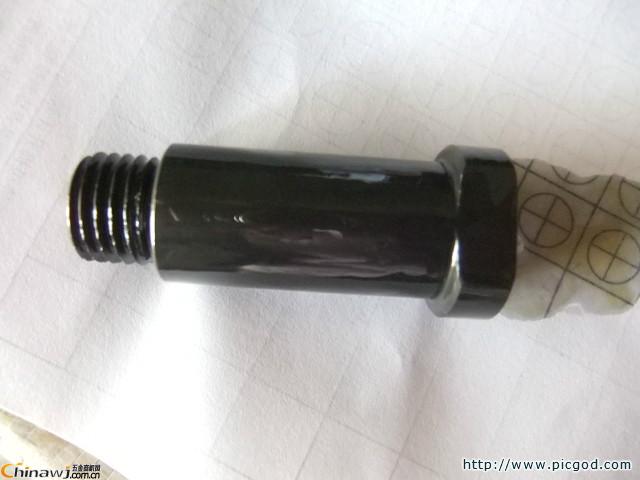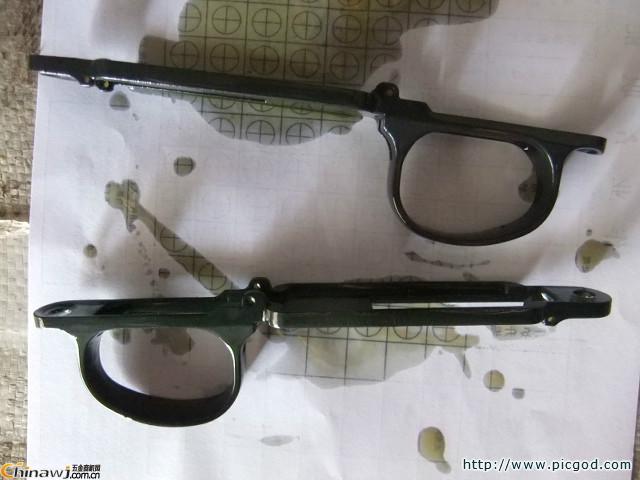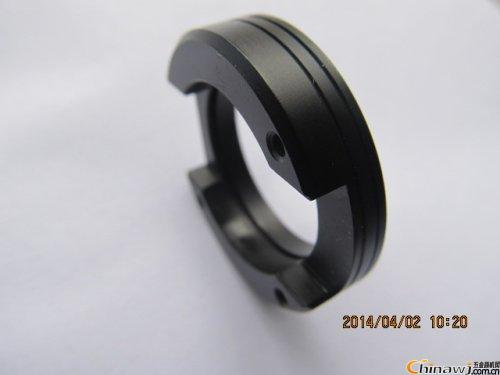What is the role of stainless steel blackening?
2023-07-28 15:11:34
What is stainless steel black, why is stainless steel black? Detailed description of the role and processing methods.
Process Description:
"QPQ" is an abbreviation for "Quench-P0lish-Quench" in English. The original meaning is quenching, polishing and quenching. After the salt bath composite treatment, in order to reduce the surface roughness of the workpiece, the surface of the workpiece can be polished once and then oxidized in the salt bath, which requires high precision parts and workpieces with high surface roughness. It is very necessary. It is called QPQ salt bath composite treatment technology in China. QPQ salt bath composite treatment technology can greatly improve the wear resistance and corrosion resistance of metal surface, and the workpiece hardly deforms. It is a new metal surface strengthening modification technology. This technology realizes the compounding of the nitriding process and the oxidation process; the compounding of nitride and oxide; the composite of wear resistance and corrosion resistance; the combination of heat treatment technology and anti-corrosion technology.
QPQ salt bath composite treatment technology was invented by German company in the 1970s. After decades of continuous development and improvement, the application range is wider and wider, so it is considered to be a great progress in the field of metal surface strengthening technology abroad. It is called a new metallurgical method. At present, QPQ salt bath composite treatment technology has also been widely promoted and applied in China, especially in automobiles, motorcycles, shaft products, electronic parts, textile machines, machine tools, electrical switches, and tooling.
Technical features:
1, good wear resistance
In the QPQ process, the metal material reacts with the salt bath liquid at an operating temperature of 570 ± 10 ° C to form a layer of a dense compound layer of excellent quality on the metal surface. The compound is composed entirely of ε-iron nitride, which can effectively improve the hardness and compactness of the metal surface, so that the metal surface has good wear resistance. The hardness of the surface of the metal material after treatment depends mainly on the alloying elements in the steel. The higher the alloying element content, the higher the hardness of the layer. According to the hardness of the layer, the commonly used materials can be divided into the following categories:
(1) Carbon steel, low-grade gold steel Representative steel number: 20, 45, TIO, 20Cr, 40Cr, etc. Surface hardness of the layer: 500-700HV
(2) Alloy steel Representative steel numbers: 3CrW8V, Crl2MoV, 38CrMoAl, 1Crl3 - 4Cr13, and the like. Surface hardness of the layer: 850-1000HV
(3) High-speed steel, austenitic stainless steel "target=_blank> stainless steel Representative steel: quenched Wl8Cr4V, W6Mo5Cr4V2 and 1Crl8Ni9Ti isotonic layer surface hardness: 1000-1250HV
Cast iron Seepage surface hardness: >500HV
The following figure shows the sliding wear test data of the workpiece of 40Cr material after different treatment methods. Based on the wear value of QPQ of 0.22mg, the wear resistance of QPQ process is 2.1 times of hard chrome plating and 2.8 times of ion nitriding. 23.7 times of induction hardening and 29.4 times of conventional quenching.
2, good corrosion resistance 1, 45# steel after QPQ salt bath composite process, plating chrome plating, hard chrome plating and ordinary blackening treatment with 1Cr18Ni9Ti stainless steel "target=_blank> stainless steel and 1Cr13 material neutral salt spray test Contrast. It can be seen that the corrosion resistance of 45# steel after QPQ treatment is 5 times that of 1Cr18Ni9Ti stainless steel "target=_blank> stainless steel, 70 times of hard chrome plating, and 280 times of ordinary blackening. After the other materials are processed by the QPQ process, the neutral salt spray test can reach 100-300 hours.
2, good fatigue resistance After the metal surface treatment by QPQ salt bath composite process introduced and produced a high residual compressive stress, the result is greatly improved various types of fatigue strength, after testing to improve fatigue resistance The strength is about 100%, which reduces the occurrence of surface defects such as pitting and rust.
3, minimal deformation
QPQ salt bath composite treatment technology does not undergo structural transformation below the phase transition point of steel due to low process temperature. Therefore, hardening processes such as quenching, high-frequency quenching, carburizing quenching and carbonitriding which generate large microstructure stress In contrast, the deformation of the workpiece after processing is much smaller. At the same time, since the workpiece is heated at 350-400 °C for 15-20 min after nitriding at 570-580 °C, this will greatly reduce the thermal stress generated when the workpiece is cooled. Therefore, the workpiece is hardly deformed after the QPQ salt bath composite process, which is deformation. The smallest hardening technology can effectively solve the hardening deformation problem that is difficult to solve by conventional heat treatment methods.
4. Low-carbon environmental protection The German company Digosha, which has invented the process, won the German Environmental Protection Award for this process. In China, the QPQ process has been tested and certified by the relevant environmental protection departments, and has been proved to be pollution-free, non-polluting and free of heavy metals by the actual use of users all over the country. And used to replace some of the more polluting processes such as electroplating. 6. It can replace multiple processes and reduce the time cost. After the QPQ salt bath composite process, the metal material can improve its hardness and wear resistance while improving its corrosion resistance, so it can replace the conventional quenching (ion nitriding). , high-frequency quenching, etc.) A tempering black (chrome plating) and other processes, greatly shortening the production cycle and reducing production costs. A large number of production data show that QPQ treatment can save 50% energy compared with carburizing quenching, save 30% cost compared with hard chrome plating, and cost-effective.
5, typical applications:
Engine valves, crankshafts, cylinder liners, gears, cams, bearings, spindles, sliders, steering arms, automotive wiper ball head shafts, guide rails, hydraulic cylinders, universal joints, connecting pins, various molds, pistons, threaded screws, bolts Nuts, pump bodies, high speed steel drill bits, **, various tools, flanges, key pins, gaskets, housings, etc.




Http://news.chinawj.com.cn What is the role of stainless steel blackening "> Edit: (Hardware Business Network Information Center) http://news.chinawj.com.cn
What is the role of stainless steel blackening "> Edit: (Hardware Business Network Information Center) http://news.chinawj.com.cn 
Process Description:
"QPQ" is an abbreviation for "Quench-P0lish-Quench" in English. The original meaning is quenching, polishing and quenching. After the salt bath composite treatment, in order to reduce the surface roughness of the workpiece, the surface of the workpiece can be polished once and then oxidized in the salt bath, which requires high precision parts and workpieces with high surface roughness. It is very necessary. It is called QPQ salt bath composite treatment technology in China. QPQ salt bath composite treatment technology can greatly improve the wear resistance and corrosion resistance of metal surface, and the workpiece hardly deforms. It is a new metal surface strengthening modification technology. This technology realizes the compounding of the nitriding process and the oxidation process; the compounding of nitride and oxide; the composite of wear resistance and corrosion resistance; the combination of heat treatment technology and anti-corrosion technology.
QPQ salt bath composite treatment technology was invented by German company in the 1970s. After decades of continuous development and improvement, the application range is wider and wider, so it is considered to be a great progress in the field of metal surface strengthening technology abroad. It is called a new metallurgical method. At present, QPQ salt bath composite treatment technology has also been widely promoted and applied in China, especially in automobiles, motorcycles, shaft products, electronic parts, textile machines, machine tools, electrical switches, and tooling.
Technical features:
1, good wear resistance
In the QPQ process, the metal material reacts with the salt bath liquid at an operating temperature of 570 ± 10 ° C to form a layer of a dense compound layer of excellent quality on the metal surface. The compound is composed entirely of ε-iron nitride, which can effectively improve the hardness and compactness of the metal surface, so that the metal surface has good wear resistance. The hardness of the surface of the metal material after treatment depends mainly on the alloying elements in the steel. The higher the alloying element content, the higher the hardness of the layer. According to the hardness of the layer, the commonly used materials can be divided into the following categories:
(1) Carbon steel, low-grade gold steel Representative steel number: 20, 45, TIO, 20Cr, 40Cr, etc. Surface hardness of the layer: 500-700HV
(2) Alloy steel Representative steel numbers: 3CrW8V, Crl2MoV, 38CrMoAl, 1Crl3 - 4Cr13, and the like. Surface hardness of the layer: 850-1000HV
(3) High-speed steel, austenitic stainless steel "target=_blank> stainless steel Representative steel: quenched Wl8Cr4V, W6Mo5Cr4V2 and 1Crl8Ni9Ti isotonic layer surface hardness: 1000-1250HV
Cast iron Seepage surface hardness: >500HV
The following figure shows the sliding wear test data of the workpiece of 40Cr material after different treatment methods. Based on the wear value of QPQ of 0.22mg, the wear resistance of QPQ process is 2.1 times of hard chrome plating and 2.8 times of ion nitriding. 23.7 times of induction hardening and 29.4 times of conventional quenching.
2, good corrosion resistance 1, 45# steel after QPQ salt bath composite process, plating chrome plating, hard chrome plating and ordinary blackening treatment with 1Cr18Ni9Ti stainless steel "target=_blank> stainless steel and 1Cr13 material neutral salt spray test Contrast. It can be seen that the corrosion resistance of 45# steel after QPQ treatment is 5 times that of 1Cr18Ni9Ti stainless steel "target=_blank> stainless steel, 70 times of hard chrome plating, and 280 times of ordinary blackening. After the other materials are processed by the QPQ process, the neutral salt spray test can reach 100-300 hours.
2, good fatigue resistance After the metal surface treatment by QPQ salt bath composite process introduced and produced a high residual compressive stress, the result is greatly improved various types of fatigue strength, after testing to improve fatigue resistance The strength is about 100%, which reduces the occurrence of surface defects such as pitting and rust.
3, minimal deformation
QPQ salt bath composite treatment technology does not undergo structural transformation below the phase transition point of steel due to low process temperature. Therefore, hardening processes such as quenching, high-frequency quenching, carburizing quenching and carbonitriding which generate large microstructure stress In contrast, the deformation of the workpiece after processing is much smaller. At the same time, since the workpiece is heated at 350-400 °C for 15-20 min after nitriding at 570-580 °C, this will greatly reduce the thermal stress generated when the workpiece is cooled. Therefore, the workpiece is hardly deformed after the QPQ salt bath composite process, which is deformation. The smallest hardening technology can effectively solve the hardening deformation problem that is difficult to solve by conventional heat treatment methods.
4. Low-carbon environmental protection The German company Digosha, which has invented the process, won the German Environmental Protection Award for this process. In China, the QPQ process has been tested and certified by the relevant environmental protection departments, and has been proved to be pollution-free, non-polluting and free of heavy metals by the actual use of users all over the country. And used to replace some of the more polluting processes such as electroplating. 6. It can replace multiple processes and reduce the time cost. After the QPQ salt bath composite process, the metal material can improve its hardness and wear resistance while improving its corrosion resistance, so it can replace the conventional quenching (ion nitriding). , high-frequency quenching, etc.) A tempering black (chrome plating) and other processes, greatly shortening the production cycle and reducing production costs. A large number of production data show that QPQ treatment can save 50% energy compared with carburizing quenching, save 30% cost compared with hard chrome plating, and cost-effective.
5, typical applications:
Engine valves, crankshafts, cylinder liners, gears, cams, bearings, spindles, sliders, steering arms, automotive wiper ball head shafts, guide rails, hydraulic cylinders, universal joints, connecting pins, various molds, pistons, threaded screws, bolts Nuts, pump bodies, high speed steel drill bits, **, various tools, flanges, key pins, gaskets, housings, etc.




Http://news.chinawj.com.cn
 What is the role of stainless steel blackening "> Edit: (Hardware Business Network Information Center) http://news.chinawj.com.cn
What is the role of stainless steel blackening "> Edit: (Hardware Business Network Information Center) http://news.chinawj.com.cn 
Engineered Frame Wood Flooring
Engineered Frame Wood Flooring,Engineered Flooring,Laminate Oak Wood,Brushed Solid Oak Flooring
Shaoxing Haohua Timber Industry Co., Ltd. , https://www.woodtopiafloor.com